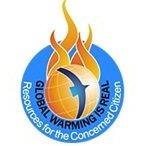“In order to learn the nature of the myriad things, you must know that although they may look round or square, the other features of oceans and mountains are infinite in variety; whole worlds are there. It is so not only around you, but also directly beneath your feet, or in a drop of water.”
-Genjo Koan
Education is a vital part of forging a viable future for life on Earth. The confusion surrounding climate science is a major impediment preventing the U.S. from mustering the political will necessary to aggressively engage global warming. Climate science is so woefully misunderstood that some children grow up believing in half-truths and bold-faced lies.
Mark McCaffrey one of the authors of a recent report titled “Toward a Climate and Energy Literate Society” referred to the state of climate change education in the U.S. as “abysmal.” He added that 80 percent of students do not feel like they understand climate change based on what they have learned in school. Two-thirds of students said that they are not learning much about it.
It is no secret that misinformed youth become misinformed adults. An April 2, 2013 Pew research Poll found that there is an alarming and growing lack of understanding among adults in the U.S. A third of Americans do not believe that global warming is serious, more than a quarter think there is inadequate proof and almost the same number attribute climate change to natural patterns.
Clearly there is a need for sweeping educational reforms that include teaching the scientific veracity of global warming.
Efforts are currently underway to provide national standards that will help to educate American students about climate science. The forthcoming K-12 science learning standards are expected to counter the irrational ignorance of climate change scepticism.
In 2011, the National Research Council published “A Framework for K-12 Science Education,” This document guides the development of specific standards for use by teachers, districts, states, curriculum developers, and researchers.
Subsequently, in a highly collaborative effort, Next Generation Science Standards (NGSS) were developed by the National Research Council, the National Science Teachers Association, the American Association for the Advancement of Science, the bipartisan nonprofit Achieve and 26 states. There have been two successive drafts that have entertained broad public and expert commentary. Now the group is about to release its final draft.
As reported by Inside Climate News, these new national science standards are expected to make the teaching of global warming part of the public school curriculum. It is recommended that climate change be taught in classes ranging from earth science to chemistry.
Starting in elementary school, educators will teach students about the evidence for man-made climate change. By the eighth grade, students will be expected to understand that “human activities, such as the release of greenhouse gases from burning fossil fuels, are major factors in the current rise in Earth’s mean surface temperature (global warming).”
A total of more than 40 states appear poised to accept these standards, including the 26 states that contributed to the NGSS and 15 others. The widespread acceptance of these standards will go a long way towards separating fact and fiction in the U.S.
Predictably, some right-wing organizations are resisting the NGSS initiative, including the Heartland Institute, which is developing its own school curriculum to promote climate skepticism. According to strategy documents leaked last year, the Heartland Institute is spending hundreds of thousands of dollars to develop a curriculum designed to question basic science, like the fact that carbon dioxide is a pollutant, and to cast doubt on the scientific veracity of global warming. The curriculum is being written by David Wojick, a prominent source of misinformation and a well known climate change sceptic.
The NGSS are important guides, but they are not mandatory. Nonetheless, in more than a dozen states, conservatives have rallied with “academic freedom bills” that mandate the teaching of anti-scientific views on global warming.
These “academic freedom bills” are twisted misnomers, as they are neither about academics nor are they about freedom, unless of course you are talking about the freedom to misinform. These bills demonstrate just how pernicious ignorance can be and they reinforce the importance of education.
As Confucius said more than two and a half thousand years ago, “If you think in terms of a year, plant a seed; if in terms of ten years, plant trees; if in terms of 100 years, teach the people.”
While education can overcome ignorance, it takes time. When this generation of high school students becomes adults, the challenges posed by climate change will be worse than they are today, perhaps even beyond tipping points from which there is no return. While education is the key to ecological betterment, the question is, do we have the time.
——————
Richard Matthews is a consultant, eco-entrepreneur, green investor and author of numerous articles on sustainable positioning, eco-economics and enviro-politics. He is the owner of The Green Market Oracle, a leading sustainable business site and one of the Web’s most comprehensive resources on the business of the environment. Find The Green Market on Facebook and follow The Green Market’s twitter feed.
Image credit: Krissy.Venosdale, courtesy flickr



The USA is one of the more vulnerable countries to climate change. Not only will sea level rise be the most ponounced on the southern parts of the US East Coast. A huge part of the Southwest – or maybe even the area south west of the Missouri-Mississippi might soon be in acute lack of water. In addition comes the threat of many more really big twisters in the Mid West. On the East coast you have to expect many more strong hurricanes even north of New York. It is high time that the US smokes out the “Masters of deceit” – the professional liars of the big oil lobby and their “think tanks” – the PR companies producing misinformation by the tonnes. Honest educators have a huge task ahead – and little time. Best of luck
Thanks for the comment Sven. I could not agree more, however, the first step is to ensure that people understand the difference between truth and falsehood in U.S. and educating the young on the basics of climate science will go a long way towards this end.
Richard
I teach at a university, and to my dismay I have to teach almost all new students the difference between Daily mail, Fox news and Lord Monckton on one hand and articles in peer reviewed scientific journals on the other as sources. It seems most people have difficulties in discerning between different levels of validity and relevance of sources.- We have a lot to do ahead, it seems.
Sven, I can only imagine what you’re up against in your work. Thanks for doing what you do and for your comments here.
the point is – when young people don’t learn the basics of information literacy and assessment of sources at high school, it means the majority of the public is very vulnerable to the “information” from the fossil fuel propaganda industry
I really appreciate you highlighting the lack of success in teaching students about climate change. It really is the root cause of not enough movement to change things that we do to the environment. It’s good to see the conversation is still going on and articles like yours are highlighting some of the issues. Thanks for spreading the word!
Thanks for your support Joel.
As someone on the front lines of education you know how difficult it can be Sven. The ready access to information provided by the digital age is partly to blame. While it may be a difficult task, it is absolutely essential that we teach people to question the facts. However, the flip side of this is that there are those who seek to muddy the reality of scientific evidence under the pretext of rational skepticism. In my view it is imperative to reach people when they are young so that they can learn strategies to help them assess the veracity of the sources they are exposed to.